
Mystery at Olympia is a 1935 detective novel by John Rhode, the pen name of the British writer Cecil Street. It is the twenty second in his long-running series of novels featuring Lancelot Priestley, an armchair detective who was able to solve mysteries without visiting the scene of the crime. It was published in the United States under the alternative title Murder at the Motor Show.

In Face of the Verdict is a 1936 detective novel by John Rhode, the pen name of the British writer Cecil Street. It is the twenty fourth in his long-running series of novels featuring Lancelot Priestley, a Golden Age armchair detective. Unusually in the series Priestley takes a more active role in the investigation himself, rather than solving it from a detached distance. It was not published in the United States until 1940, by Dodd Mead, with the slightly altered title of In the Face of the Verdict.
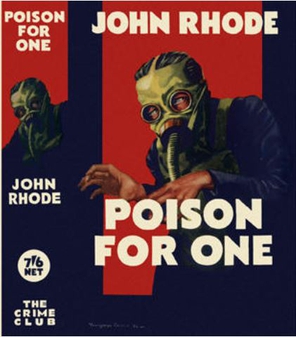
Poison for One is a 1934 detective novel by John Rhode, the pen name of the British writer Cecil Street. It is the eighteenth in his long-running series of novels featuring Lancelot Priestley, a Golden Age armchair detective. It combines elements of the locked room mystery and country house mystery.

Death on the Board is a 1937 detective novel by John Rhode, the pen name of the British writer Cecil Street. It is the twenty sixth in his long-running series of novels featuring Lancelot Priestley, a Golden Age armchair detective. It was published in the United States by Dodd Mead under the slightly altered title Death Sits on the Board.

Nothing But the Truth is a 1947 detective novel by John Rhode, the pen name of the British writer Cecil Street. It is the forty fourth in his long-running series of novels featuring Lancelot Priestley, a Golden Age armchair detective.
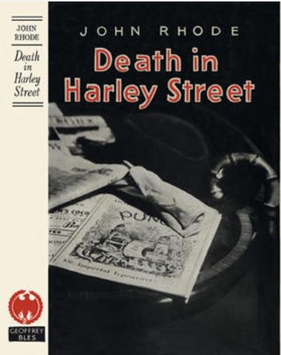
Death in Harley Street is a 1946 detective novel by John Rhode, the pen name of the British writer Cecil Street. It is the forty third in his long-running series of novels featuring Lancelot Priestley, a Golden Age armchair detective. Several sources consider it to be the author's masterpiece.

Family Affairs is a 1950 detective novel by John Rhode, the pen name of the British writer Cecil Street. It is the fifty first in his long-running series of novels featuring Lancelot Priestley, a Golden Age armchair detective. It was published in America by Dodd Mead under the alternative title The Last Suspect. It has been described as "probably the best post-war Rhode novel".

The Secret Meeting is a 1951 detective novel by John Rhode, the pen name of the British writer Cecil Street. It is the fifty second in his long-running series of novels featuring Lancelot Priestley, a Golden Age armchair detective. It was published in America the same year by Dodd Mead. Unusually for the series it has an early Cold War element.

Dr. Priestley's Quest is a 1926 detective novel by John Rhode, the pen name of the British writer Cecil Street. It was the second appearance of the armchair detective Lancelot Priestley, who featured in a long-running series of novels during the Golden Age of Detective Fiction. It has been described as the first major detective novel by the author. In its relationship between Priestley and his secretary and future son-in-law Harold Merefield is shown the influence of Conan Doyle's Sherlock Holmes and Watson. Similarly, Inspector Hanslet of Scotland Yard fulfils a similar role to that of Lestrade.
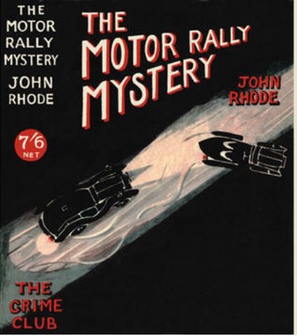
The Motor Rally Mystery is a 1933 detective novel by John Rhode, the pen name of the British writer Cecil Street. It is the fourteenth in his long-running series of novels featuring Lancelot Priestley, a Golden Age armchair detective. It was published in the United States by Dodd Mead under the alternative title Dr. Priestley Lays a Trap. It takes place against the backdrop of the real life RAC Motor Rally, which concluded at Torquay.

The Robthorne Mystery is a 1934 detective novel by John Rhode, the pen name of the British writer Cecil Street. It is the seventeenth in his long-running series of novels featuring Lancelot Priestley, a Golden Age armchair detective. It was published in the United States the same year by Dodd Mead.

Proceed with Caution is a 1937 detective novel by John Rhode, the pen name of the British writer Cecil Street. It is the twenty-seventh in his long-running series of novels featuring Lancelot Priestley, a Golden Age armchair detective. It was published in the United States the same year by Dodd Mead under the alternative title Body Unidentified.
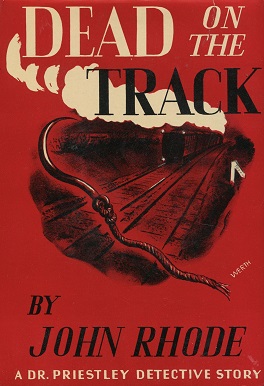
Dead on the Track is a 1943 detective novel by John Rhode, the pen name of the British writer Cecil Street. It is the thirty seventh in his long-running series of novels featuring Lancelot Priestley, a Golden Age armchair detective. Like a number of mystery novels of the era, it has a railway setting. In theme and plot it is very similar to the author's earlier 1931 work Tragedy on the Line. It is the first entry in the series since Hendon's First Case (1935) in which Priestley's old associate Hanslet is the lead investigator. The other recurring police officer in the series Inspector Jimmy Waghorn is now working with military intelligence.
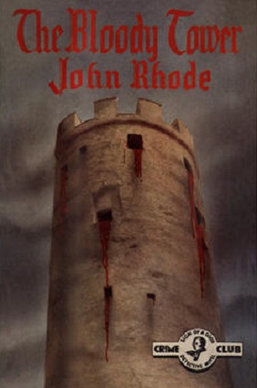
The Bloody Tower is a 1938 detective novel by John Rhode, the pen name of the British writer Cecil Street. It is the twenty ninth in his long-running series of novels featuring Lancelot Priestley, a Golden Age armchair detective. It was published in the United States the same year by Dodd Mead under the alternative title Tower of Evil. It is notable among Rhode's more realistic style during the series, for its Gothic elements. For The Guardian E. R. Punshon wrote "in The Bloody Tower Mr. John Rhode gives another excellent example of his eminently satisfactory and solid talent."

The Fourth Bomb is a 1942 detective novel by John Rhode, the pen name of the British writer Cecil Street. It is the thirty sixth in his long-running series of novels featuring Lancelot Priestley, a Golden Age armchair detective. In The Observer Maurice Richardson wrote "Inspector Waghorn does the investigating, but the evidence is so contradictory and suspicion so widely distributed that the solution calls for Dr. Priestley, whom, you will be sorry to hear, I thought was looking alarmingly shaky. Sound recommendation, of course" while Isaac Anderson in the New York Times wrote "It is merely the familiar Dr. Priestley formula set against the background of wartime England."

Tragedy on the Line is a 1931 detective novel by John Rhode, the pen name of the British writer Cecil Street. It is the tenth in his long-running series of novels featuring Lancelot Priestley, a Golden Age armchair detective who works alongside the less sharp-witted Superintendent Hanslet of Scotland Yard. It was published in the United States the same year by Dodd Mead.

The Davidson Case is a 1929 detective novel by John Rhode, the pen name of the British writer Cecil Street. It was the seventh appearance of the armchair detective Lancelot Priestley, who featured in a long-running series of novels during the Golden Age of Detective Fiction.

Dead Men at the Folly is a 1932 detective novel by John Rhode, the pen name of the British writer Cecil Street. It is the thirteenth in his long-running series of novels featuring Lancelot Priestley, a Golden Age armchair detective. It was published in the United States by Dodd Mead.
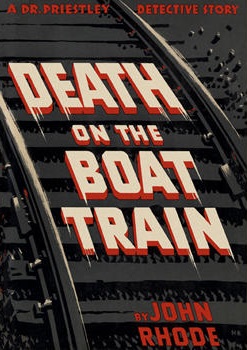
Death on the Boat Train is a 1940 detective novel by John Rhode, the pen name of the British writer Cecil Street. It is the thirty second in his long-running series of novels featuring Lancelot Priestley, a Golden Age armchair detective. As in most of the later novels much of the detective footwork is done by Inspector Waghorn of Scotland Yard. The construction of the murder setting bears similarities to Death in the Tunnel, written by Street under his other pen name Miles Burton. With its focus on seemingly unbreakable alibis and railway and ship timetables, it is also similar in style to the Inspector French novels of Freeman Wills Crofts.

Death in Wellington Road is a 1952 mystery detective novel by John Rhode, the pen name of the British writer Cecil Street. It is the fifty fifth in his long-running series of novels featuring Lancelot Priestley, a Golden Age armchair detective. It was published in America the same year by Dodd Mead. A review in The New Yorker considered it "Not exactly inspired, but still a solid and conscientious job.".




















